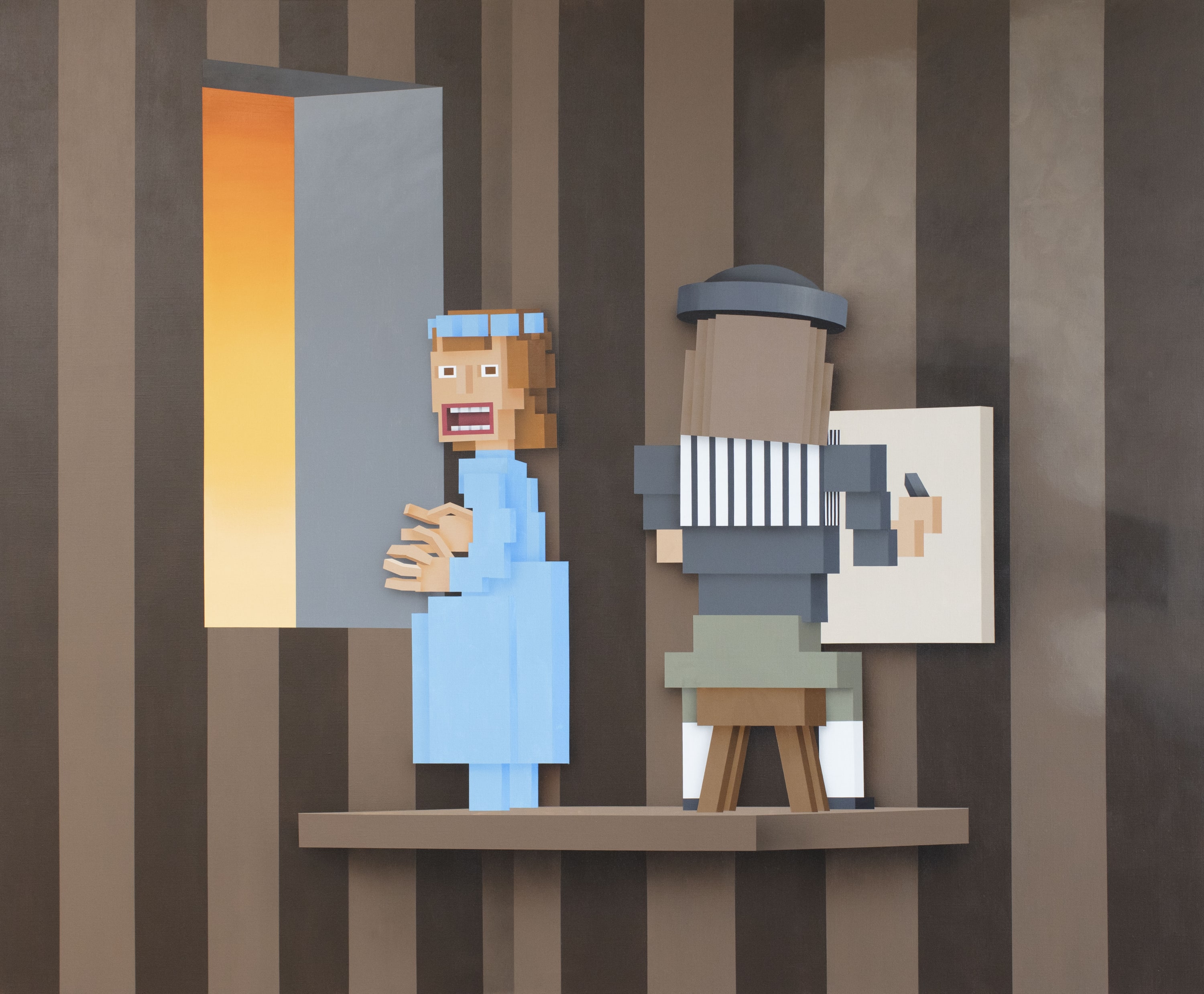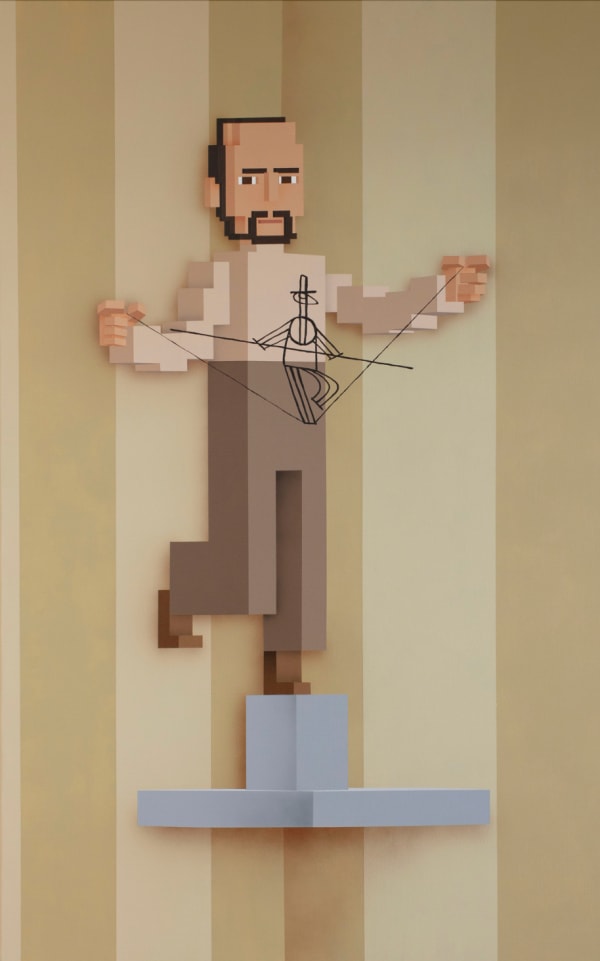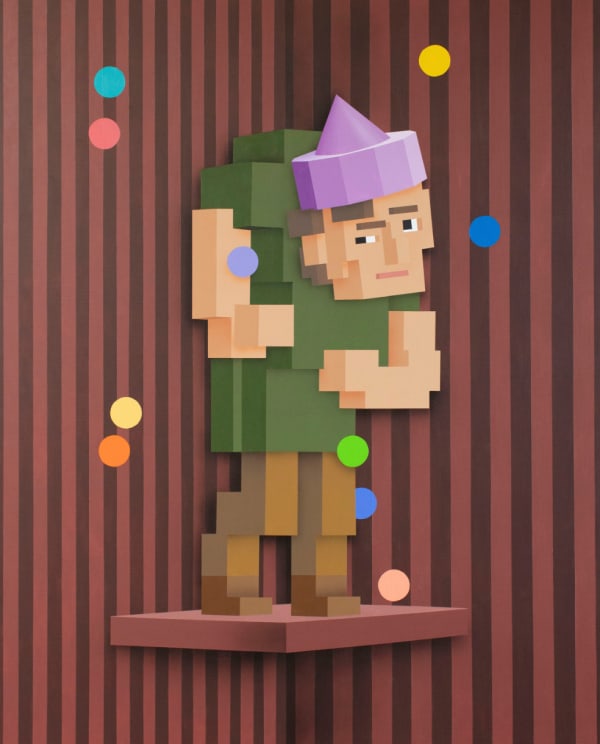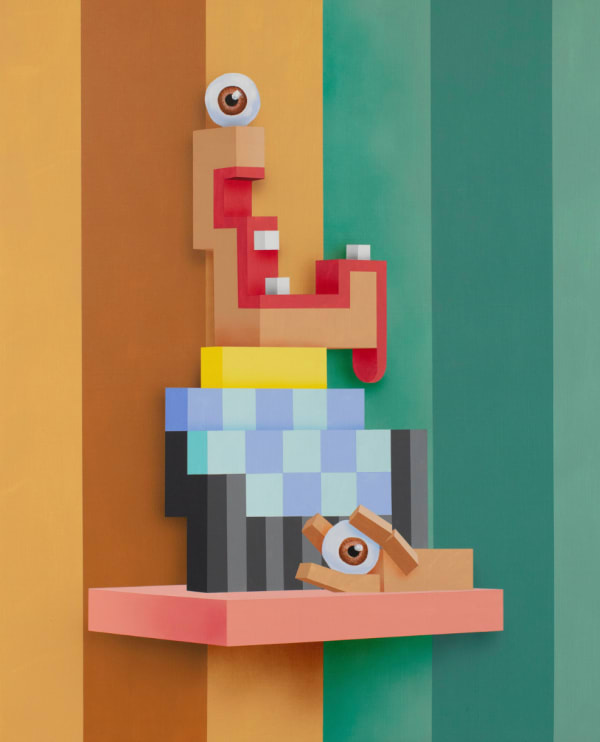-
JD Malat Gallery London is proud to present ODRADEK, a solo exhibition by Iranian-French artist Sepand Danesh (b. 1984, Tehran), opening June 12th 2025. Featuring ten new paintings, ODRADEK expands Danesh’s long-standing inquiry into memory, identity, and the psychology of space.
-

Sepand Danesh
Sepand Danesh (b. 1984, Tehran) is an Iranian contemporary artist based in Paris who explores identity, transformation, and the paradoxes of contemporary existence in our hyperconnected age. Employing Euclidean geometry, Danesh creates large scale compositions through painted cube shapes that generate pixelated forms, referencing our digital landscape whilst interrogating the psychological territories of displacement and belonging. Danesh's practice explores 'the dynamic of the Hub', examining how ideas burst forth and circulate in our interconnected world. The metaphorical Hub represents confinement, whether physical, cultural, linguistic, or existential to represent escape and transformation. Danesh's large scale canvases and no visible interior confinement offer a cognitive dialect due to the scale of the trompe l’œil compositions, inviting viewers to physically confront the psychological and existential states he investigates.
-
 Sepand Danesh, Baigneuse, 2025, Acrylic paint on linen, 70 7/8 x 59 in, 180 x 150 cm
Sepand Danesh, Baigneuse, 2025, Acrylic paint on linen, 70 7/8 x 59 in, 180 x 150 cm -
 Sepand Danesh, G. Gould, J-S. Bach & the Murmur, 2025, Acrylic paint on linen, 70 7/8 x 55 1/8 in, 180 x 140 cm
Sepand Danesh, G. Gould, J-S. Bach & the Murmur, 2025, Acrylic paint on linen, 70 7/8 x 55 1/8 in, 180 x 140 cm -
 Sepand Danesh, Vermeer, 2025, Acrylic paint on linen, 65 x 78 3/4 in, 165 x 200 cm
Sepand Danesh, Vermeer, 2025, Acrylic paint on linen, 65 x 78 3/4 in, 165 x 200 cmVermeer - Sepand Danesh
In Vermeer, the artist and his subject are rendered in fragments, pixelated and distanced. The painter paints. The woman waits. Between them, silence thickens. Light remains central, as in Vermeer’s originals, but here it is diffused through digital form. Memory, gaze, and authorship are all held in tension. This is painting within painting, not recreated but disrupted. Danesh reframes the past not as stable ground but as scattered recollection. The work becomes a corner of memory, consistent with the logic of Odradek, where clarity is always partial and history is rebuilt from shards. -
-
 Sepand Danesh, Paul Klee, 2025
Sepand Danesh, Paul Klee, 2025 -
 Sepand Danesh, Funambule , 2025
Sepand Danesh, Funambule , 2025 -
 Sepand Danesh, Baigneuse, 2025
Sepand Danesh, Baigneuse, 2025 -
 Sepand Danesh, G. Gould, J-S. Bach & the Murmur, 2025
Sepand Danesh, G. Gould, J-S. Bach & the Murmur, 2025 -
 Sepand Danesh, Quasi - Modo, 2025
Sepand Danesh, Quasi - Modo, 2025 -
 Sepand Danesh, Fool , 2025
Sepand Danesh, Fool , 2025 -
 Sepand Danesh, Self Portrait, 2025
Sepand Danesh, Self Portrait, 2025 -
 Sepand Danesh, En Attendant Godot, 2025
Sepand Danesh, En Attendant Godot, 2025 -
 Sepand Danesh, Virginia Woolf , 2025
Sepand Danesh, Virginia Woolf , 2025 -
 Sepand Danesh, Vermeer, 2025
Sepand Danesh, Vermeer, 2025
-
-
 Sepand Danesh, Fool , 2025, Acrylic paint on linen, 43 1/4 x 35 3/8 in, 110 x 90 cm
Sepand Danesh, Fool , 2025, Acrylic paint on linen, 43 1/4 x 35 3/8 in, 110 x 90 cm -
 Sepand Danesh, Paul Klee, 2025, Acrylic paint on linen, 74 3/4 x 47 1/4 in, 190 x 120 cm
Sepand Danesh, Paul Klee, 2025, Acrylic paint on linen, 74 3/4 x 47 1/4 in, 190 x 120 cm -
 Sepand Danesh, Self Portrait, 2025, Acrylic paint on linen, 63 x 51 1/8 in, 160 x 130 cm
Sepand Danesh, Self Portrait, 2025, Acrylic paint on linen, 63 x 51 1/8 in, 160 x 130 cmSelf-Portrait
In Self Portrait, Danesh disassembles the very notion of the self. The figure is fragmented beyond recognition, spiralling, incomplete, and visually scattered. A candle is held upright, a classical symbol of awareness or inner light. But its meaning here is unstable. Does it illuminate, or merely flicker in the void? This is not a likeness, but a confrontation, as if self-knowledge were both illuminating and destabilising. The radial background evokes a burst: a mental implosion or explosion, with memory, trauma, or insight made visible. Identity, as rendered by Danesh, is neither fixed nor whole. It is provisional. The work reflects the show’s larger structure, a corner of perception where memory stalls and the self, pixel by pixel, is both assembled and erased.
-
With ODRADEK, JD Malat Gallery presents a poignant and philosophically attuned body of work that continues Danesh’s exploration of the corner as both refuge and rupture. It is a site in which the internal world is laid bare with rigour, tenderness, and intellectual clarity.
Sepand Danesh | ODRADEK
Current viewing_room
















